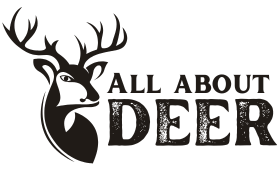The Leaf Muntjac is a petite but extraordinary member of the deer family. These secretive forest dwellers have a wealth of remarkable features that make them truly intriguing. With their petite stature and distinctive characteristics, they are a testament to the marvels of nature.
Table of Contents
Species Data
- Class: Mammalia
- Order: Artiodactyla
- Family: Cervidae
- Scientific Name: Muntiacus putaoensis
- Life Span: Typically 7-10 years
- Height: Approximately 40-50 cm (16-20 inches)
- Weight: Around 15-18 kg (33-40 pounds)
Description
The Leaf Muntjac, scientifically known as Muntiacus putaoensis, is a small, elusive deer species known for its compact size and reddish-brown coat. Its most distinguishing feature is its short, straight antlers, which are unique among deer species.
Appearance
These diminutive deer have a charming appearance, with delicate white spots adorning their coat. Their small size and agile build allow them to navigate through dense forests with ease.
Behavior
Leaf Muntjacs are known for their solitary and secretive nature. They are primarily crepuscular, meaning they are most active during dawn and dusk, which helps them avoid predators.
Habitat
These deer inhabit the lush, dense forests of Southeast Asia, particularly in regions with thick undergrowth. Their environment provides them with ample cover and sustenance.
Diet and Nutrition
Leaf Muntjacs are herbivores, feeding on a diet of leaves, fruits, and various plant materials. Their browsing habits play a crucial role in shaping the plant communities within their habitat.
Mating Habits
During the breeding season, males compete for the attention of females through vocalizations and territorial displays.
Mating Behavior
- Reproduction Season: Typically during the rainy season
- Pregnancy Duration: Approximately 210 days
- Baby Carrying: Mothers are highly protective of their fawns.
- Independent Age: Fawns become more self-reliant after about 6-8 months.
- Female Name: Doe
- Male Name: Buck
- Baby Name: Fawn
5 Fun Facts for Kids
- Leaf Muntjacs are often called “barking deer” due to the dog-like sounds they make.
- Their small size and agility help them evade predators like tigers and leopards.
- These deer have a keen sense of smell, which they use to detect danger and locate food.
- The Leaf Muntjac's diet includes a variety of plants, making them important seed dispersers in their ecosystem.
- Conservation efforts are crucial to protect these miniature marvels and their forest homes.

